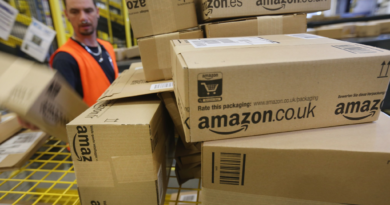Oil and gas lobby is a ‘huge barrier’ to solar that is now ready for prime time, renewable energy founder says
Jeremy Crane founded Yellow Door Energy in 2015 with a plan to provide businesses with clean solar power produced on site at a cheaper cost than what they pay to pull from the grid.
As enticing as that all sounds, the CEO told the Fortune Global Forum in Abu Dhabi that he constantly has to battle the entrenched economic interests of the fossil fuel lobby ahead of this week’s UN COP28 climate conference in Dubai.
In meetings, he regularly encountered executives openly dismissive of his efforts, arguing their industry creates the very wealth needed to expand renewable investments that will replace them.
“It’s a huge barrier,” Crain told a panel on Tuesday. “If I look at where our barriers are today on that growth, it’s about regulations that have been put in place to restrict that.”
Crane needn’t look very far for an example. Even in the emirate where he lives today, local utility Dubai Electricity and Water Authority (DEWA) imposes obstacles on what he can and cannot provide to his customers.
“They won’t allow us to install more than 10% of the connected load of any building…because that is a huge revenue generator for the state,” the Yellow Door Energy CEO said, citing numerous instances in recent years “where I’ve sat around the table with oil execs that wag their finger at me and say, ‘We’re subsidizing your business’.”
The DEWA did not immediately respond to Fortune‘s request for comment.
Worldwide transition from coal to solar
The International Energy Agency argues solar PV will overtake coal by 2027 to become the largest source of power generation in the world, now that costs have dropped more than 80% in the last decade.
The United States is no exception. A record 20 gigawatts of production capacity are expected to be installed there in the second half of this year, according to a forecast by market research firm Wood Mackenzie. That is more than what was achieved over the course of most full years.
But solar has a key drawback, also common to wind power, in that it is only available intermittently. Even on a sunny day, output can fluctuate depending on cloud cover.
This makes both solar and wind ill-suited to replace baseload power generation where a constant steady supply is needed; here nuclear fission is far more competitive as a low-CO2 alternative.
One possible answer is the rapid deployment of industrial-scale stationary storage batteries the likes of which Tesla is currently offering with the Megapack. This can help smooth out peaks and troughs in the supply of renewable energy.
Despite opposition from entrenched lobbies, Yellow Door Energy’s Crane said the transition to solar is already well underway.
“We’re taking customers off grid today because it’s cheaper for them to produce all the energy they need during the daytime,” he said. “There is more than enough generation. It needs to be moved to where it is consumed, and it needs to be stored.”




